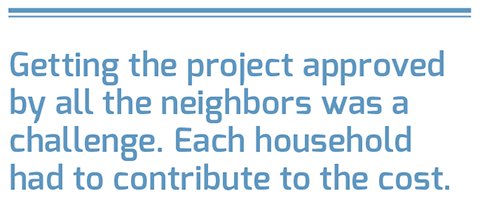One of the thorniest problems with the transition to EVs is how to provide charging infrastructure for residents of multi-unit dwellings. In California, the world’s laboratory of electromobility, at least one electric utility is offering an incentive program to help owners of MUDs get charging stations set up for their tenants.
Pacific Gas and Electric (PG&E), which provides electricity to most of the northern two-thirds of California, has set a goal of installing 7,500 Level 2 chargers at multi-unit dwellings and workplaces between 2018 and 2020. PG&E’s EV Charge Network Program offers grants and installation assistance to property owners who have at least ten parking spots available for charging locations.
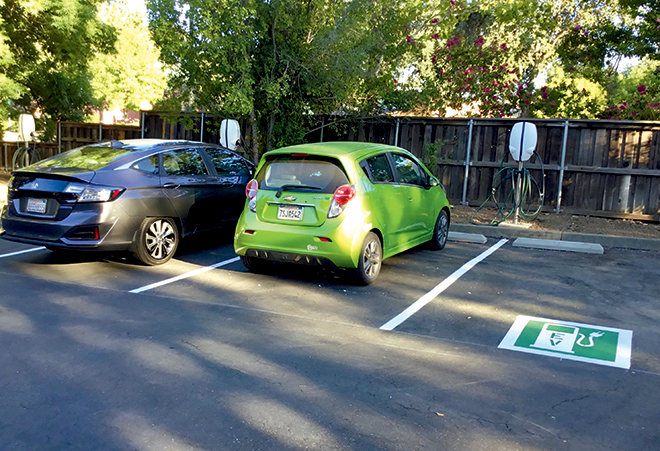
Muir Commons, a townhouse community in Davis, California, took advantage of the program to install 26 charging stations, one for each residential unit. Muir Commons, which opened in 1991, is a “cohousing complex,” featuring private homes clustered around shared spaces, and it has long been at the forefront of adopting renewable energy technologies. In 2002, the community self-funded and installed what was the largest rooftop solar installation in the city at the time.
Muir Commons resident Eugen Dunlap is a long-time EVangelist – he owned an EV1 back in the day, and currently drives a Chevy Spark EV. He and fellow resident Corey Bock spearheaded the charging project. “The challenge is clear,” said Dunlap. “How do we develop access to pollution-free transportation for apartment and townhouse dwellers? We looked at all the options, and with the blessing of the Muir Commons board of directors, partnered with PG&E to have the charging stations installed in the community’s parking lot.”
“Muir Commons is the ideal environment to test this concept,” added Dunlap. “We have a track record of being ahead of the curve when it comes to energy technology.”
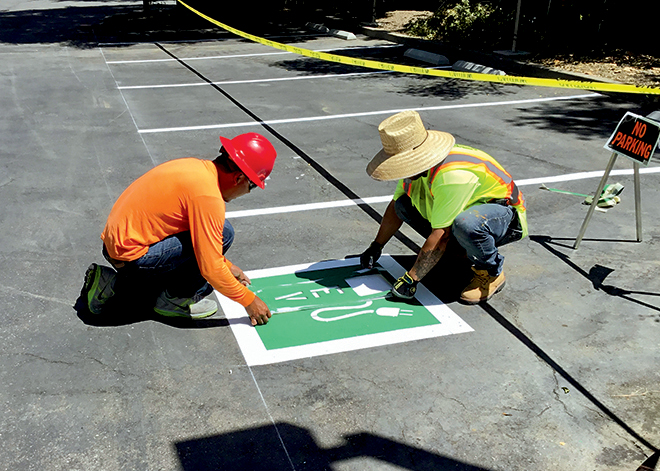
Difficulties presented themselves at the beginning. The transformer serving the complex was already operating at 100% capacity, so a new one had to be installed. It was also necessary to do extensive trenching to run electrical conduits across the parking lot. Such situations are probably not uncommon when retrofitting an existing property with a substantial number of chargers, so technical and financial assistance from a local utility is likely to be essential. Without the grant from PG&E, Dunlap estimates that installation costs would have exceeded $20,000 per charger.
Dunlap found the application process for PG&E’s program to be simple and straightforward. Getting the project approved by his neighbors was more of a challenge. Each household had to contribute to the cost – PG&E originally wanted each resident to pay $1,150, which it calculated was equivalent to the cost a single-family homeowner would pay to install a charger. However, this was a non-starter with the residents who didn’t own EVs. In the end, the utility agreed to charge each household $550, to be paid off in installments of $25 per month, interest-free. Residents who later buy an EV will qualify for an additional $800 grant.
The chargers were provided by EVBox, a rapidly growing firm that was founded in the Netherlands in 2010, and now has an installed base of over 60,000 chargers in 45 countries. PG&E offers a couple of different ownership options to participants in its EV Charge Network Program. The Muir Commons residents opted for an arrangement under which PG&E will own the hardware for 10 years, after which ownership will pass to the residents.
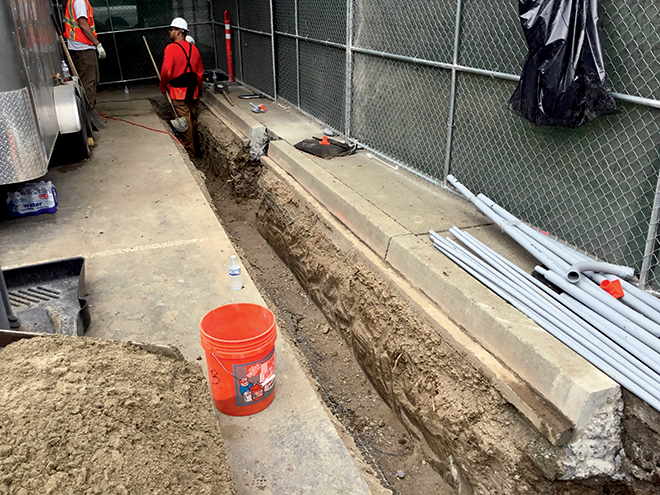
The 26 charging stations have been up and running since last August, and Dunlap reports that they work perfectly. There is one problem, however – it turns out that MUD properties have to pay for power at a commercial rate of around 20 cents per kWh off-peak, whereas individual homeowners pay a special EV rate of around 12 cents. “It’s unfair for two reasons,” says Dunlap. “It’s more expensive to put chargers in, and we have to pay more for power.”
This situation probably won’t last, however. PG&E has applied to the California Public Utilities Commission (CPUC) for approval to offer a special rate for MUDs, and the utility is also planning to implement a “super-off-peak rate” in the early mornings when generation from solar arrays is at its highest level. The Muir Commons residents are an eco-savvy bunch – some work for the California Air Resources Board – so they’ll surely be able to navigate the bureaucratic byways and get the best electrical rate available. Mr. Dunlap is happy to help folks who aren’t so well-connected. He invites anyone needing help with setting up MUD or workplace charging infrastructure to contact him at eugen@evsplussolar.org.
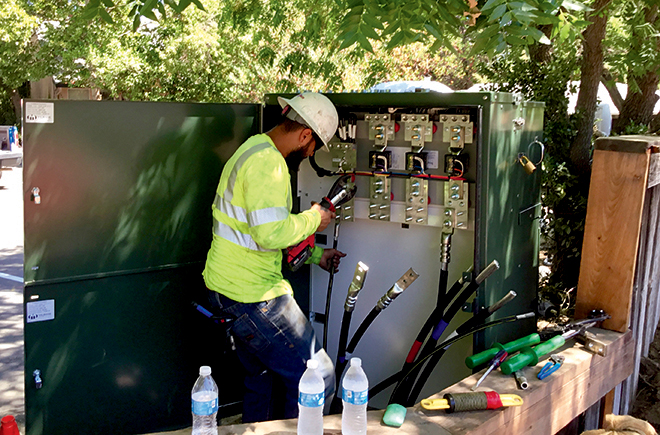
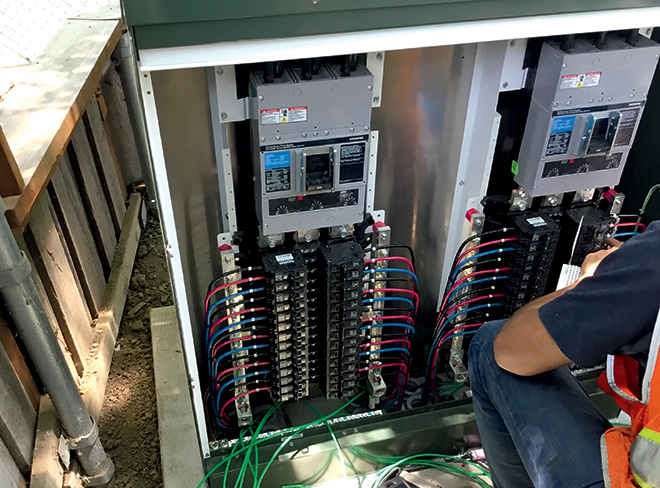
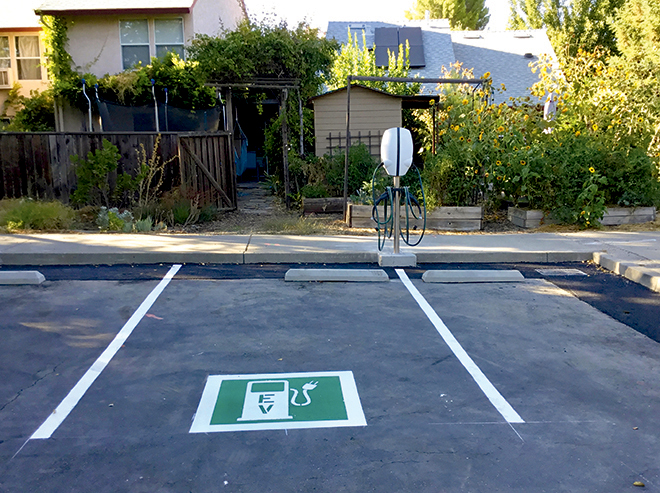

This article appeared in Charged Issue 41 – January/February 2019 – Subscribe now.








